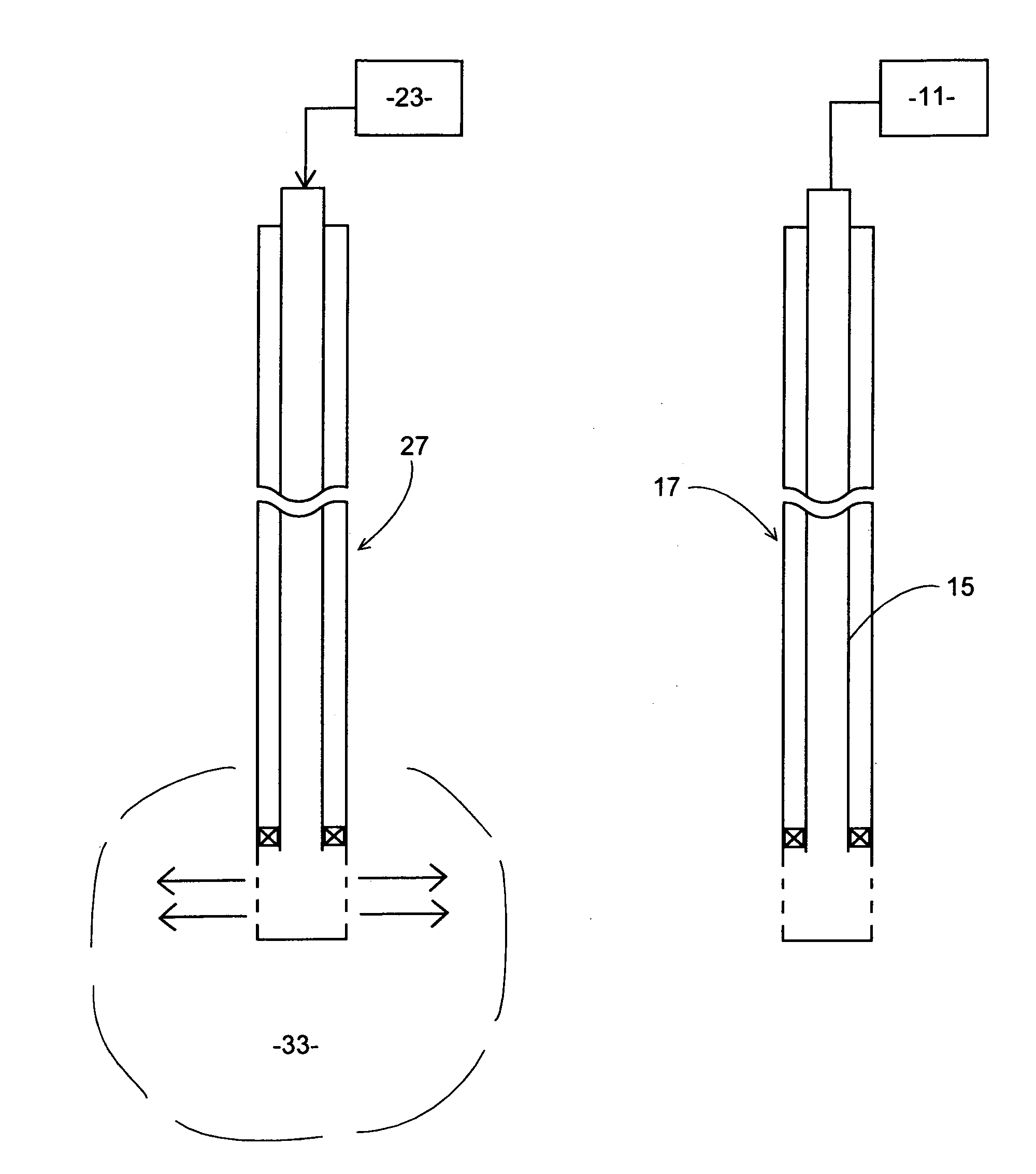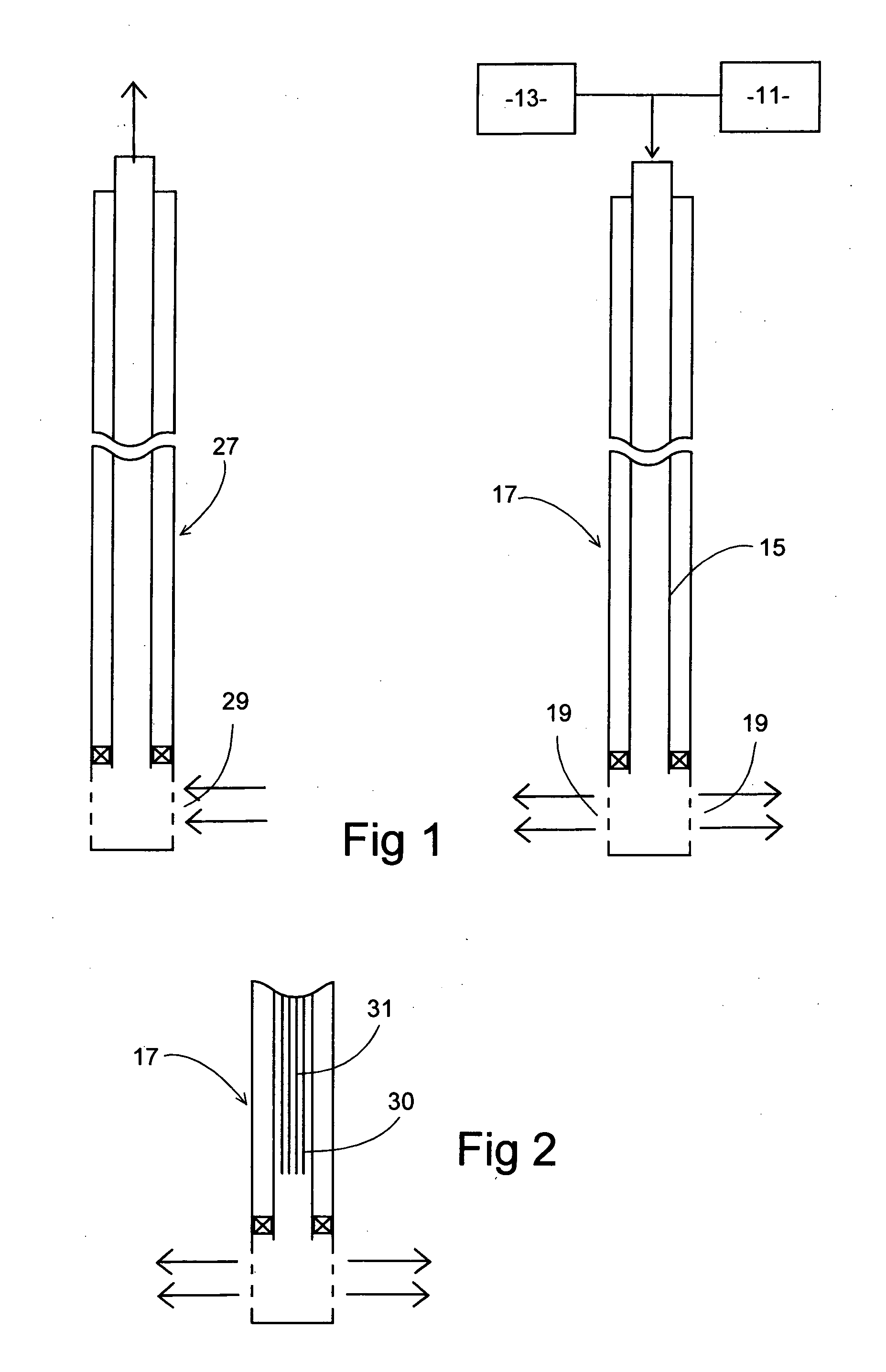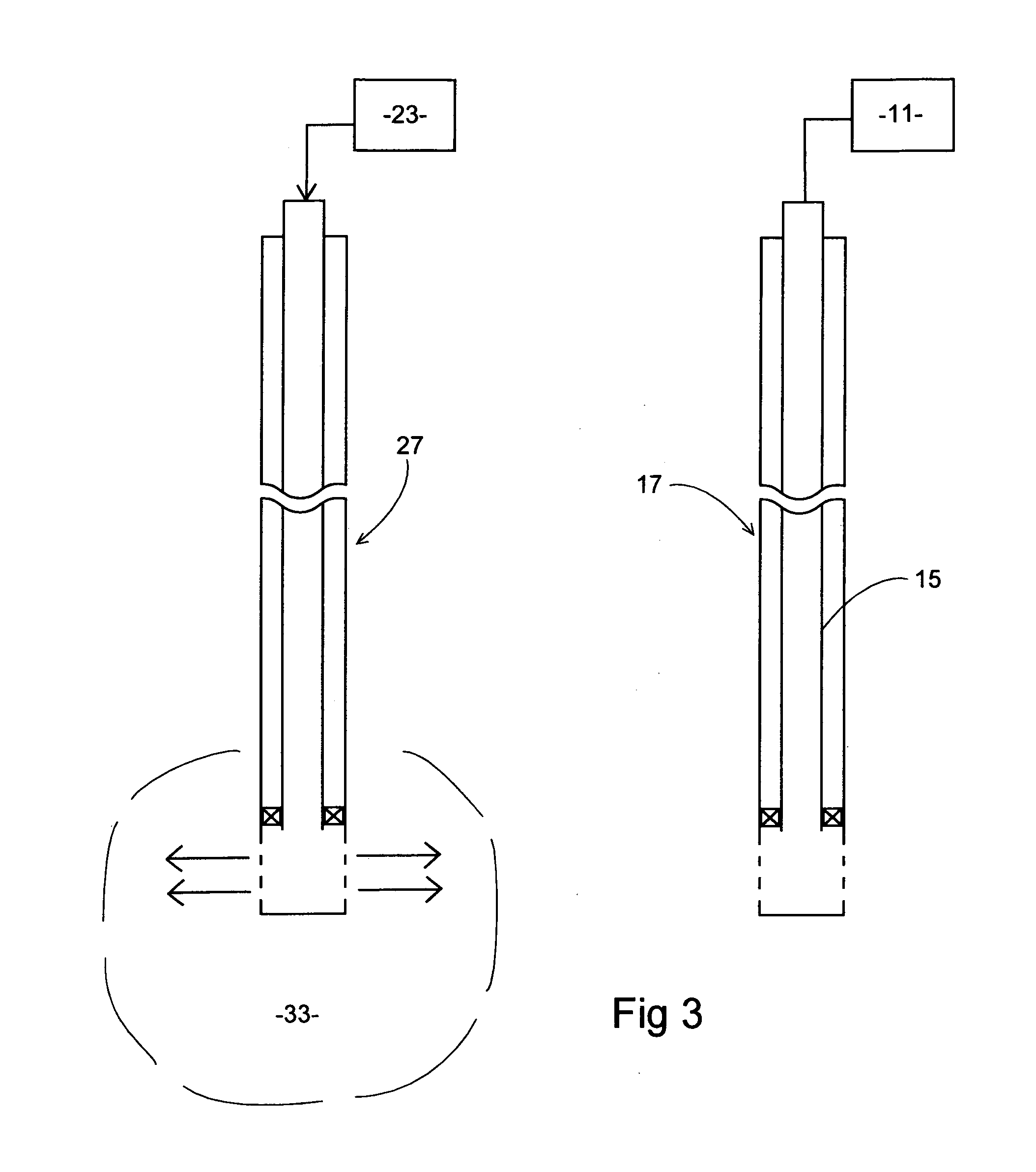Solvent assisted oil recovery
a technology of oil recovery and solvent, applied in the direction of chemistry apparatus and processes, bulk chemical production, borehole/well accessories, etc., can solve the problems of asphaltene accumulating as undesirable deposits, asphaltene separating from crude oil, and significant formation damag
- Summary
- Abstract
- Description
- Claims
- Application Information
AI Technical Summary
Benefits of technology
Problems solved by technology
Method used
Image
Examples
Embodiment Construction
[0046]This invention's combination of an asphaltene precipitant and a more polar aliphatic material may be used in various ways. One possibility, as schematically illustrated in FIG. 1, is that both the asphaltene precipitant from a supply 11 and the more polar material from a supply 13 are mixed at the surface and pumped down within the casing 15 of an injection well 17 from which they are pumped out at 19 into a reservoir formation while at 29 a mixture of oil and diluent flows into a production well 27 at some distance from the injection well 17. In this example both wells are vertical, but the invention may be applied to wells at other orientations. A production well may have several such injection wells positioned around it, conforming to normal practice.
[0047]It is desirable that the mixture of asphaltene precipitant and more polar material forms a single phase within the reservoir formation around the injection well. If the asphaltene precipitant from the supply 11 is an alka...
PUM
| Property | Measurement | Unit |
|---|---|---|
| pressure | aaaaa | aaaaa |
| oil/water partition coefficient | aaaaa | aaaaa |
| viscosity | aaaaa | aaaaa |
Abstract
Description
Claims
Application Information
 Login to View More
Login to View More - R&D
- Intellectual Property
- Life Sciences
- Materials
- Tech Scout
- Unparalleled Data Quality
- Higher Quality Content
- 60% Fewer Hallucinations
Browse by: Latest US Patents, China's latest patents, Technical Efficacy Thesaurus, Application Domain, Technology Topic, Popular Technical Reports.
© 2025 PatSnap. All rights reserved.Legal|Privacy policy|Modern Slavery Act Transparency Statement|Sitemap|About US| Contact US: help@patsnap.com



